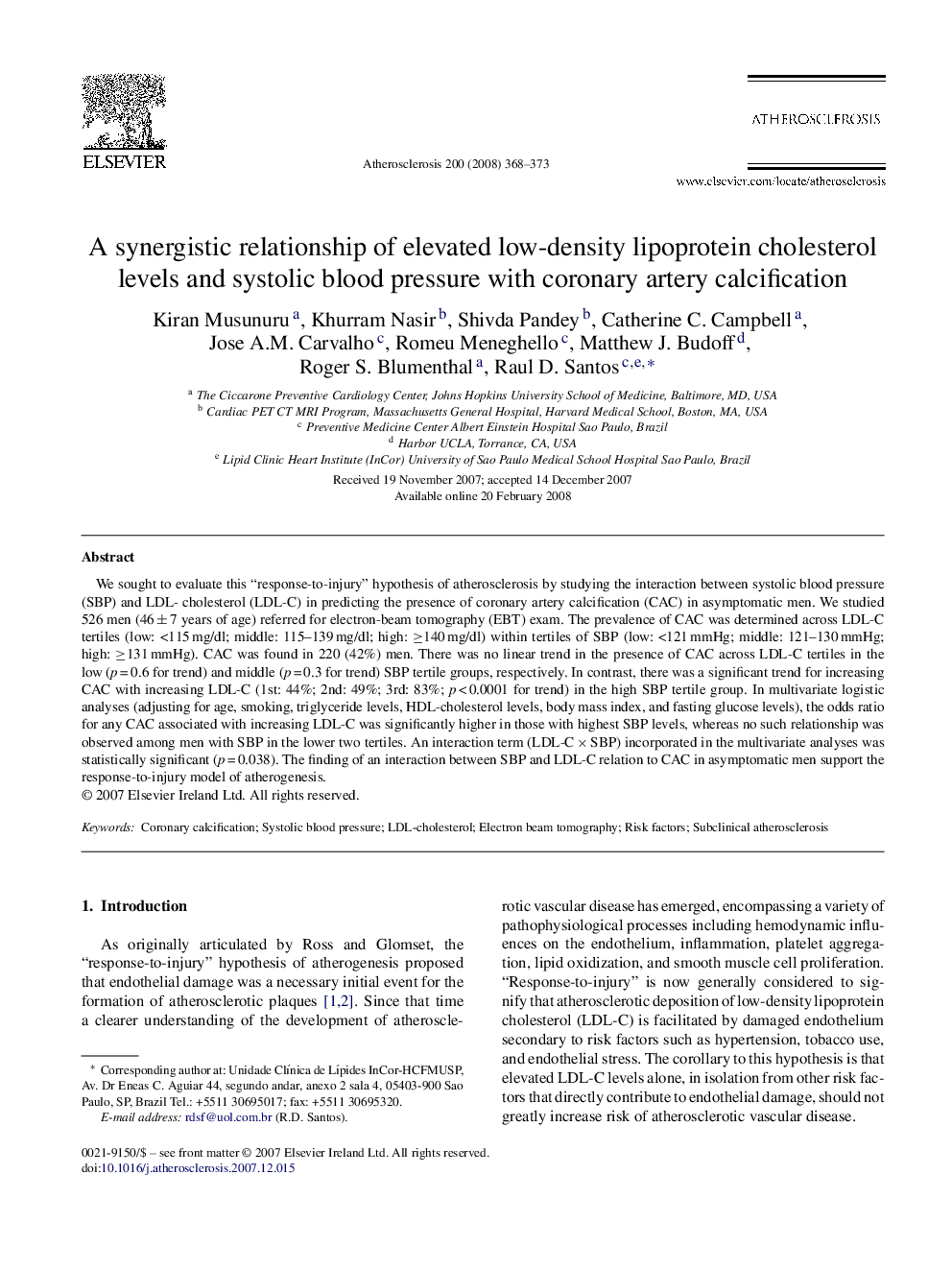| Article ID | Journal | Published Year | Pages | File Type |
|---|---|---|---|---|
| 2894577 | Atherosclerosis | 2008 | 6 Pages |
Abstract
We sought to evaluate this “response-to-injury” hypothesis of atherosclerosis by studying the interaction between systolic blood pressure (SBP) and LDL- cholesterol (LDL-C) in predicting the presence of coronary artery calcification (CAC) in asymptomatic men. We studied 526 men (46 ± 7 years of age) referred for electron-beam tomography (EBT) exam. The prevalence of CAC was determined across LDL-C tertiles (low: <115 mg/dl; middle: 115-139 mg/dl; high: â¥140 mg/dl) within tertiles of SBP (low: <121 mmHg; middle: 121-130 mmHg; high: â¥131 mmHg). CAC was found in 220 (42%) men. There was no linear trend in the presence of CAC across LDL-C tertiles in the low (p = 0.6 for trend) and middle (p = 0.3 for trend) SBP tertile groups, respectively. In contrast, there was a significant trend for increasing CAC with increasing LDL-C (1st: 44%; 2nd: 49%; 3rd: 83%; p < 0.0001 for trend) in the high SBP tertile group. In multivariate logistic analyses (adjusting for age, smoking, triglyceride levels, HDL-cholesterol levels, body mass index, and fasting glucose levels), the odds ratio for any CAC associated with increasing LDL-C was significantly higher in those with highest SBP levels, whereas no such relationship was observed among men with SBP in the lower two tertiles. An interaction term (LDL-C Ã SBP) incorporated in the multivariate analyses was statistically significant (p = 0.038). The finding of an interaction between SBP and LDL-C relation to CAC in asymptomatic men support the response-to-injury model of atherogenesis.
Keywords
Related Topics
Health Sciences
Medicine and Dentistry
Cardiology and Cardiovascular Medicine
Authors
Kiran Musunuru, Khurram Nasir, Shivda Pandey, Catherine C. Campbell, Jose A.M. Carvalho, Romeu Meneghello, Matthew J. Budoff, Roger S. Blumenthal, Raul D. Santos,
